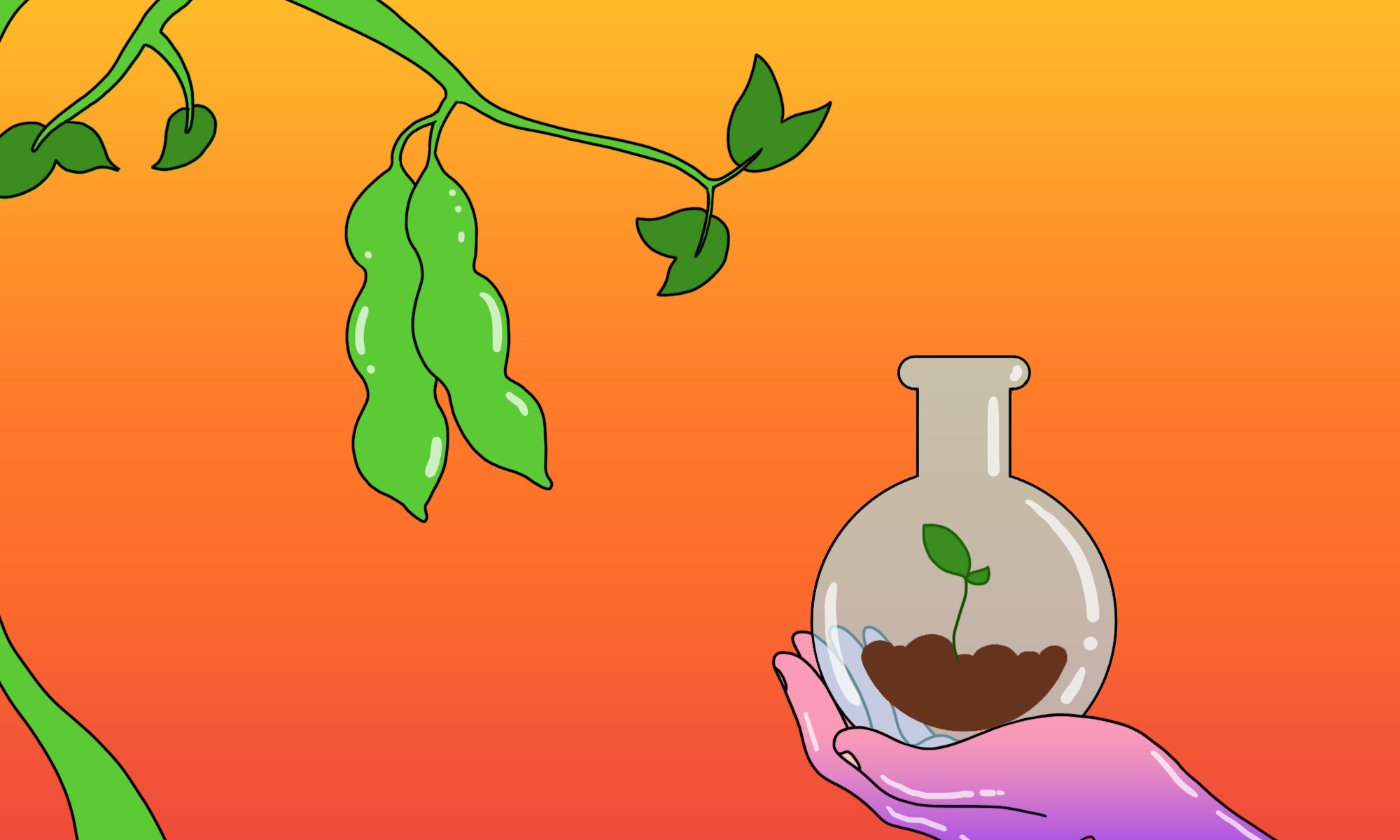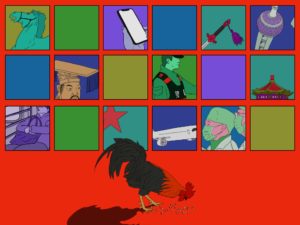After decades of bans, China is beginning to plant gene-edited crops
Commercialized planting of genetically modified crops has not yet been allowed on Chinese soil. But the government is making slow but steady moves to cultivate such technologies at home in its push for food self-sufficiency.

China is cautiously approaching the use of gene-edited or genetically modified (GM) seeds to boost food production at home, as growing environment and geopolitical risks threaten its massive amounts of agriculture imports.
China’s Ministry of Agriculture and Rural Affairs approved the safety of a gene-edited soybean, which is valid for five years from April 21. It is China’s first safety approval of such gene-editing technology in a crop.
The soybean, developed by privately owned Shandong Shunfeng Biotechnology, has two modified genes. Unlike genetic modification, which introduces new configurations of genetic materials typically derived from other organisms, gene editing is considered to be less risky because it only alters existing genes.
Shandong Shunfeng Biotechnology claims to be the first company in China seeking to commercialize gene-edited crops. It is reportedly working on 20 other such projects, including higher-yielding rice, wheat, and corn, herbicide-resistance rice, soybeans, and Vitamin C-rich lettuce.
How to feed 1.4 billion people
China is home to 20% of the global population, but has less than 10% of the world’s arable land. (The United States has the comparative luxury of feeding just 4% of the world’s population with 16.5% of the world’s arable land.)
To compensate for such restricted resources, China has had to depend on other countries to feed its population of 1.4 billion. Currently, the country relies on a vast amount of agricultural imports, such as corn and soybeans. Soybeans in particular continue to account for the highest proportion of China’s food imports: China is currently the world’s largest soybean importer, accounting for nearly 60% of the global trade.
“China has a significant yield gap in major commodities such as corn and soybean when compared with the U.S. and Brazil, and the comparative advantage suggests that it will continue to rely on global markets for imports,” Wendong Zhang, an assistant professor at Dyson School of Applied Economics and Management at Cornell University, told The China Project.
According to data from the General Administration of Customs of China, China imported a total of 147 million tons of grains in 2022, of which 62% or 91 million tons was soybeans. The crop also carries a hefty price tag: Of the total $83 billion China spent on imported grain, $61 billion was spent on soybeans.
China imports most of its soybeans from Brazil, the United States, and Argentina, with Brazil accounting for 64% of the total. In the last two years, the U.S. reported record exports to China for soybeans, corn, beef, chicken meat, tree nuts, and sorghum. Soybeans accounted for nearly half of U.S. agricultural exports to China at a record $16.4 billion in 2022, surpassing the previous year’s record by more than $2.2 billion.
China wants to grow most of its grains at home
But China does not want to depend on other countries to feed its people. The Chinese government has rolled out a slew of policies and other measures to combat rising food insecurity, owing largely to strained ties with the U.S., extreme weather events caused by climate change, and the war in major grain exporter Ukraine.
“The growing geopolitical tensions and climate risks have made China push in several margins to try to boost domestic production of critical food crops and major feed grains, and the GMO technology investment and trials now approved are part of a suite of measures to boost Chinese self-sufficiency in these commodities,” Zhang told The China Project. “The U.S. experience shows that two decades of adoption of GM crops could lead to about a 20% yield gain.”
Beijing has long stated that it wants to ensure that “the rice bowls of the Chinese people are filled with Chinese grain.” China’s self-sufficiency ratio for its grain supply is currently at 83%, well below the standard of 95% set by the Chinese government in a 1996 white paper.
The push for food self-sufficiency has been a top priority for Beijing. This past February, the Chinese Communist Party (CCP) also continued a 20-year tradition of making its first policy announcement of the year focused on agriculture and rural affairs. The document, commonly known as “No. 1 central document,” called for greater efforts to “stabilize production and ensure supply of grain and important agricultural products” and to “strengthen support for agricultural science, technology, and equipment.”
To realize those goals, the Chinese government has launched a raft of measures to support greater crop yields, such as the launch of a nationwide farmland-reclamation campaign to increase acreage. But the aggressive expansion is raising concerns over soil sustainability: In many cases, the land is simply not fertile enough to consistently grow crops such as grains and oilseeds, like soybeans, which are linked to soil degradation and are highly sensitive to climate change.
Other concerns include the livelihoods of rural farmers, who may be forced to grow essential crops instead of more lucrative agricultural products, such as bamboo and strawberries. Despite the government’s subsidies and incentives to help support the boost in production across the country, those types of crops still remain less lucrative than other agricultural products.
Meanwhile, China’s grain output hit 687 million metric tons in 2022, a 0.5% increase from the previous year and a record high, according to official data. The country’s grain output is expected to reach 694 million tons in 2023.
Are better seeds the answer to China’s food problems?
China has increasingly viewed technology as the key to achieving food self-sufficiency. Chinese state media has dubbed seeds as the “microchips” of the agricultural sector, while warning of the “overreliance on imports amid global uncertainties.” The government has also vowed to maintain production at a similar level this year, and has repeatedly stressed its intentions to modernize its seed industry.
The government has invested heavily in research and development of technologies to improve quality and increase the output of its foodstuffs, especially grains. China leads the globe in crop gene-editing research with around 75% of the world’s patents.
“China has been investing in seed technology for decades, especially in hybrids such as rice hybrids led by famous scientist Yuán Lóngpíng 袁隆平,” Zhang told The China Project. “Gene-editing techniques and CRISPr technology offer a tool that allows China to catch up and shorten the R&D phase.”
In 2017, China National Chemical Corporation (ChemChina) clinched a landmark $43 billion takeover of Syngenta, the Swiss pesticides and seeds group, marking China’s largest foreign acquisition ever at the time. Syngenta is a global leader in crop protection products, such as herbicides and pesticides, and the third-biggest producer of seeds — including selectively bred hybrids and genetically modified ones. The acquisition was a big win for China’s efforts to boost food security.
Syngenta’s 65 billion yuan ($9.5 billion) plans to go public were called off last month, in what would have been the largest IPO in the history of the Shanghai Stock Exchange’s Science and Technology Innovation Board (STAR market). The exact reasons why the mega IPO stalled remain unclear. However, just today, Syngenta announced it would be moving forward with an IPO on the Shanghai Stock Exchange’s main board.
“Before, Chinese leaders were concerned about public reluctance in accepting these new technologies, but more importantly, they worry that allowing this technology while domestic companies are not competitive enough will simply hand over the Chinese market to foreign seed conglomerates,” Zhang said.
A cautious approach to commercializing gene-edited crops
However, despite Beijing’s push to modernize its seed industry, China has yet to officially approve the planting of gene-edited crops such as rice, corn, or soybeans. Such crops have rarely been allowed to be sown, and China has restricted their import because of biosecurity risks, development of its domestic biotechnological industry, and deep-rooted public fears about such technologies.
“The hurdles include low public support and lack of domestic seed companies that could outcompete with the foreign companies. China also has more trials of planting GM crops, in part due to the U.S.-China trade war,” Zhang told The China Project.
China does allow some gene-edited imports, such as corn, soybeans, and alfalfa, for use in animal feed and food processing. While the government is expanding pilot projects to industrialize GM corn and soybeans, those programs are reserved for only animal use and not for human food. No staple food crops have been granted a license for commercial planting until now.
In February, China moved to tentatively open up its lucrative corn market to genetically modified varieties. The country’s agriculture ministry mapped out around 4 million mu (660,000 acres), or less than 1% of its corn fields, to be planted with GM corn this year, but leading seed companies have delayed hopes that commercial production will begin this year, since Beijing has not provided a clear timeline.
“Corn’s value as a fuel and feed crop is increasingly recognized, so the Chinese government [has] become more willing to use GMO technology for corn,” he added.
Beijing has remained wary of commercializing such technologies, blunting the development of its seed industry compared with other countries. The only two commercial GM planting licenses that China has granted went to cotton in 1997 and papaya in 2006, but commercial prospects have since stalled.
“If a GMO soybean plant has superior productivity than those genetically bred ones, it should be cultivated, as it will help feed 1.4 billion people,” Ning Li (李凝 Lǐ Níng), a professor at the Hong Kong University of Science and Technology (HKUST), told The China Project. “Decades of field experiments on GMO soybeans conducted worldwide have built enough evidence [to ease] environment safety concerns. On top of that, each GMO grain is supposed to have passed toxicity tests like any other food on the market.”
“People need education on GMOs like sex education for kids”
While Beijing has had its eye on rolling out gene-edited crops, it has yet to win over the wariness of the Chinese public.
In 2018, a peer-reviewed survey found that only 12% of Chinese consumers had a positive view of GMOs. Meanwhile, a lack of public confidence in GM crops due to historical events have sparked heated online debates on their impending commercialization. Many people fear that foods made with GM plants pose a risk to their safety, as well as to potential long-term impacts on human health and the environment.
“These concerns are valid concerns, like [how] we worry about taking drugs or coffee or about the effect of cellular phones on our health and diesel engines’ emissions on our environment,” Li told The China Project. “I think that misconception of what [a] GMO plant is might be the problem in marketing it. People need education on GMOs like sex education for kids.”
Beijing, however, remains intent on its overall plan to work toward commercializing GMOs, and is trying to get the public on board. Despite a cut in research funding due to public resistance in the early 2010s, the government resumed its support for research and commercialization for GMOs in its 13th Five-Year Plan for Science and Technology Innovation in 2016. Two years later, the Ministry of Agriculture and Rural Affairs (MARA) released a report (in Chinese) on increasing public biotechnology literacy to advance the commercialization of GM crops, including closer cooperation between local governments and the media through popular social media platforms WeChat and Weibo.
“There is inherent concern about food quality and distrust about government on this issue, especially following the 2008 infant formula scandal. The rising tensions with the U.S. also added fuel to conspiracy theories about foreign seed companies taking over Chinese production, or the purposeful downgrading of the Chinese population’s health using GMOs,” Zhang told The China Project. “Largely they are unfounded or misinformed, especially for the latter one. As China pushes for these efforts, they [have] tightened the messaging in Chinese social media such as WeChat and the conspiracy theories surrounding GMO are much less than prior years.”






